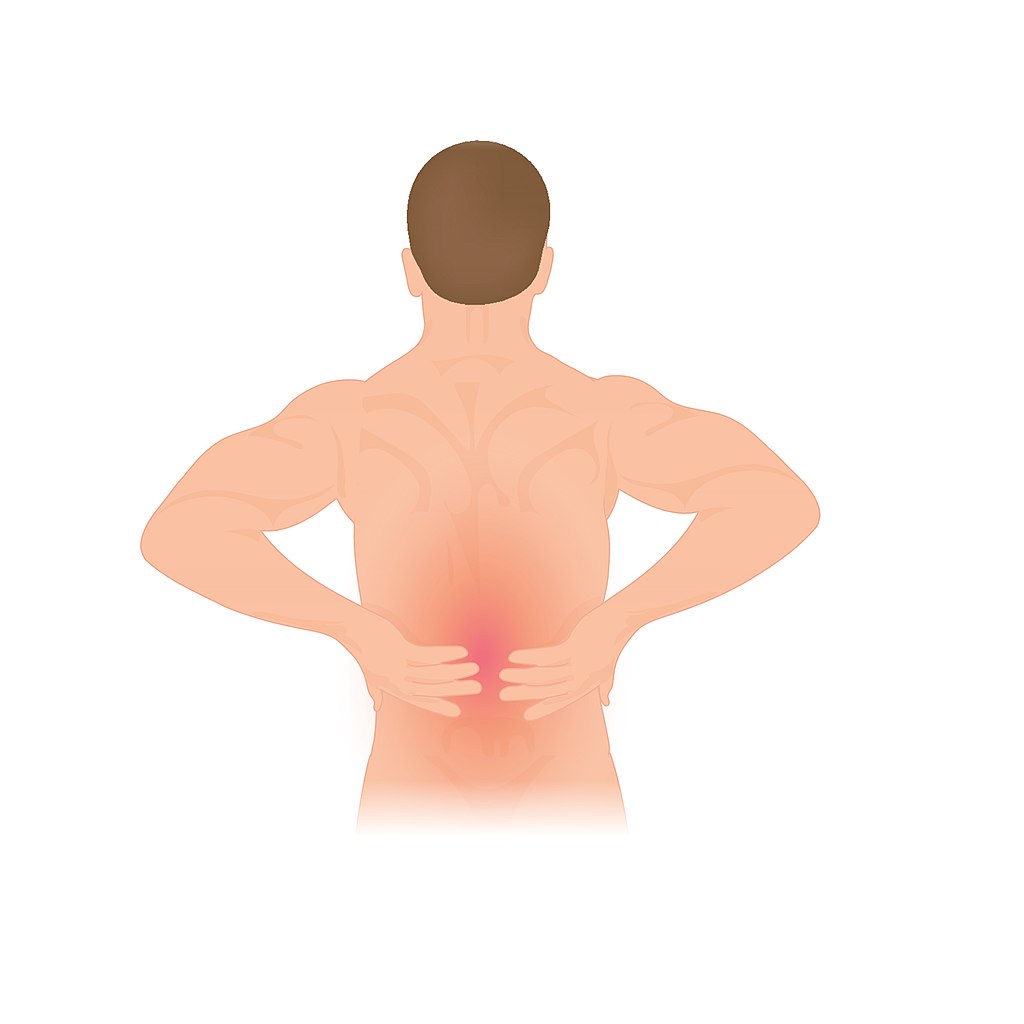By Tim Bochnowski — Second only to knee pain, lower back pain (LBP) is frequently cited as an issue cyclists encounter. There are many causes ranging from weak core muscles and disk issues to restricted sacro-iliac joints and poor bike fit. Cycling recreationalists and racers alike are susceptible and the exact cause of the back pain is often tricky to diagnose. The lower back contains an intricate system of muscles, joints and nerves. Understanding the complexities of this vital cycling body region could help prevent the injuries that are common to cyclist.

Aside from bike fit, there is a whole host of physiological issues that can cause lower back pain. Core strength and lack of flexibility is often identified as a culprit. Hamstring tightness, commonly seen in cycling, could pull the pelvis into a posterior tilt increasing the strains in the lower back muscles and ligaments. Also, the core provides a stable platform to absorb the forces created when pedaling. Simply put, the abdomen and back muscles provide important support of the spinal column while on the bike. A weak core may lead to unnecessary rotation and movement of the hips and spine. Stretching and maintaining or improving range of motion is a very important part of pain free cycling.
Other potential muscles that can be related to lower back pain include the piriformis, psoas and gluteal muscles. As part of the sacroiliac complex, these muscles, in addition to the hip flexors, are often overlooked. All four need to be kept long and loose. For example, the psoas is a hip flexor that attaches at the spine and if tight can cause stresses on the lower spine. There are many excellent websites that show how to correctly stretch these muscle groups. As always, if issues arise, seeking medical advice from your personal physician or medical professional is recommended.
Finally, age-related wear and tear, degenerative disks, scoliosis, muscle fatigue, spasms and overtraining can contribute to pain. As previously stated lower back pain encompasses a multitude of body systems. Fortunately there are trained professionals in medicine and bike fitting to help.
Holding a bent-forward (flexion) position for long periods of time while on the bicycle can cause the lower back muscles to become less effective at maintaining spinal stability and posture. Leg length discrepancies (LLD) are common with cyclist and can also cause issues with spinal alignment on the bike. Poor bike fit can make existing issues worse. Correcting mechanical adjustments of the bicycle can usually be administered by competent bicycle fitters, coaches and medical professionals.
Saddle and handlebar height, fore/aft saddle position and a variety of other adjustments are all in play when trying to remedy LBP. How you sit on your bike is very important. Having your spine in a neutral position (flat) by slightly rotating your hips forward could help you stop the prolonged flexion of your spine. A comfortable saddle horizontally positioned can also aid in comfort. In addition to a comfortable bike fit, stretching, deep tissue massage, physical therapy and a variety of other options should be considered for lower back pain.
Finally, riding style can have an effect on lower back pain. Pushing too big of a gear for long periods stresses your body and can activate LBP. Be conscience of your effort, gearing and posture while on your bike. Don’t over-train. LBP can sometimes be brought on by overall fatigue.
In the end, the importance of having a good bicycle position is recognized by cyclists. Comfort breeds performance. Keep working at improving your position on your bike and enjoy the ride.
Tim Bochnowski is a bicycle fitter and owner of Mountain Velo LLC, a cycling performance center located in Park City, UT. Tim started fitting bicycles in 1985 and has been trained by BIKEFIT, Slowtwitch, Retul and several other fitting techniques and tools. www.mountainvelo.com

